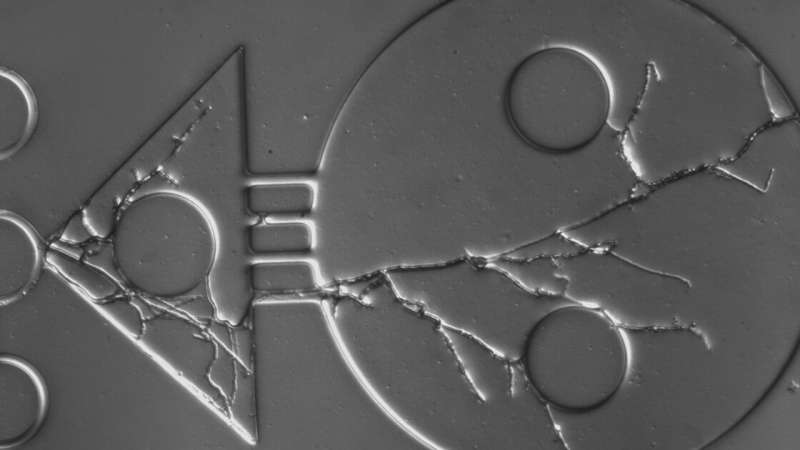Soldiers, snakes and marathon runners in the hidden world of fungi

Researchers at Lund University in Sweden have discovered the individual traits of fungi, and how their hyphae—that is, the fungal threads that grow in soil—behave very differently as they navigate through the earth's microscopic labyrinths.
The study was performed in a lab environment, and the underground system constructed synthetically from silicone. Using a microscope, researchers were able to follow seven species and compare their behavior. How do they react when the maze they grow in turns sharply and forces the hyphae to grow in the direction it came from? What happens when a large space opens up in front of them?
"Under a microscope, their behavior becomes much more personal than you can ever imagine. They become individual characters," says Edith Hammer, one of the researchers behind the study.
The research team discovered that the fungi use different strategies when they grow and form their structures, the so-called mycelium. The different characteristics have led the researchers to give the various fungi nicknames such as 'the soldier,' the 'marathon runner' and 'the snake.'
The soldier gained its name because it grows with great force, and plows down obstacles in its path, yet it does not get very far. The marathon runner, on the other hand, sends out hypha that act like 'lone fighters,' and grow quite far before giving up their search for food. However, this requires that they do not encounter tough obstacles, as this is their weak spot. Unlike the marathon runner, the snake specializes in weaving and growing around obstacles.

Examples of obstacles that the hyphae may encounter, and that can delay and confuse them, are zigzag patterns, sharp angles and rounded corners. The study shows that some species simply stop when they end up in a corner.
The research is unique because it is the first time that the behavior of individual hyphae in multiple species has been studied in parallel and in detail. Previous studies have often focused on the mycelium as a whole, as they have not been able to distinguish the behavior of individual hyphae.
So far, however, important pieces of the puzzle are missing on how microscopic soil structures affect the behavior of fungi, in order for the research to have practical applications in agriculture.
More information: Kristin Aleklett et al. Fungal foraging behaviour and hyphal space exploration in micro-structured Soil Chips, The ISME Journal (2021). DOI: 10.1038/s41396-020-00886-7
Journal information: ISME Journal
Provided by Lund University





















